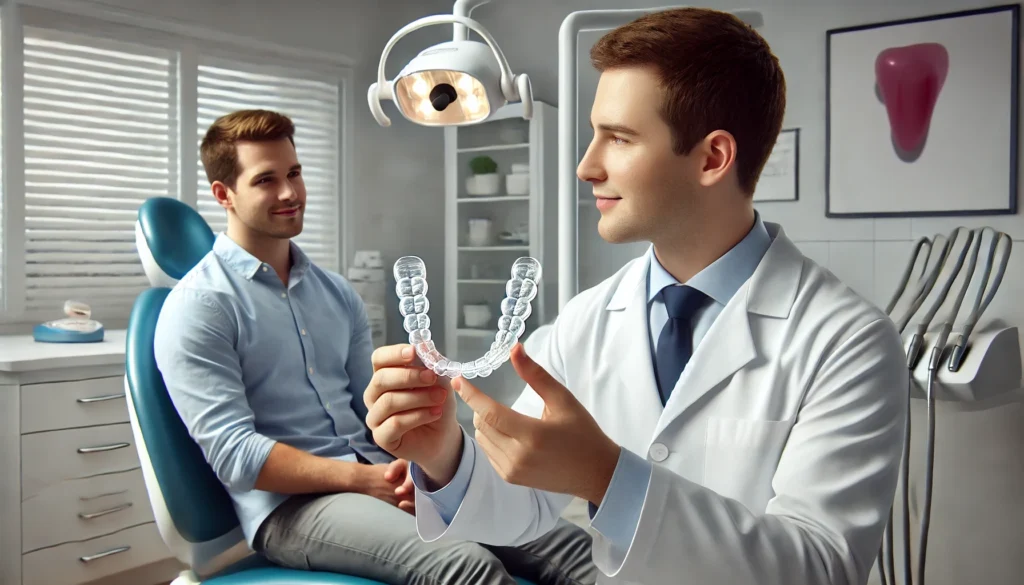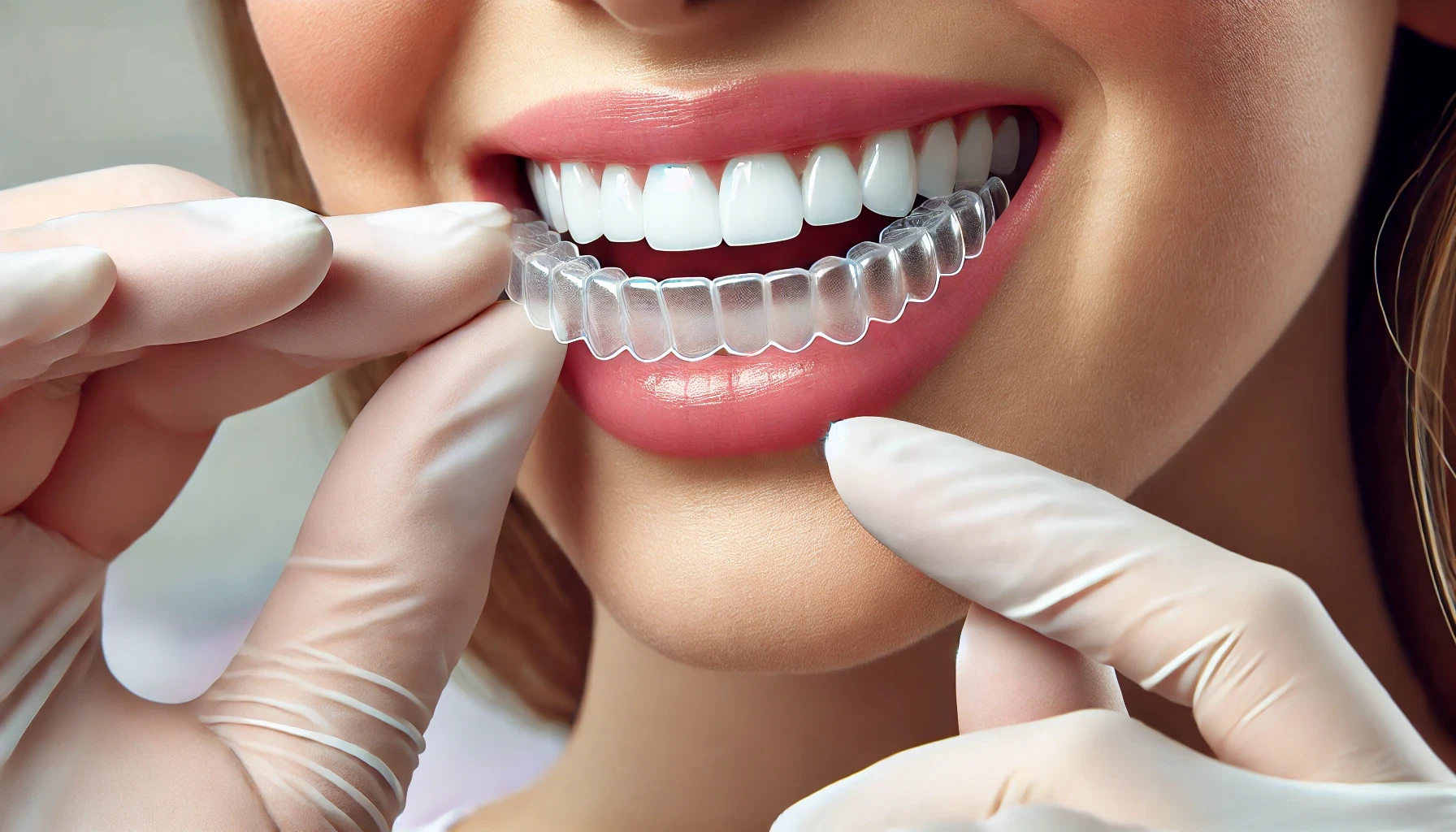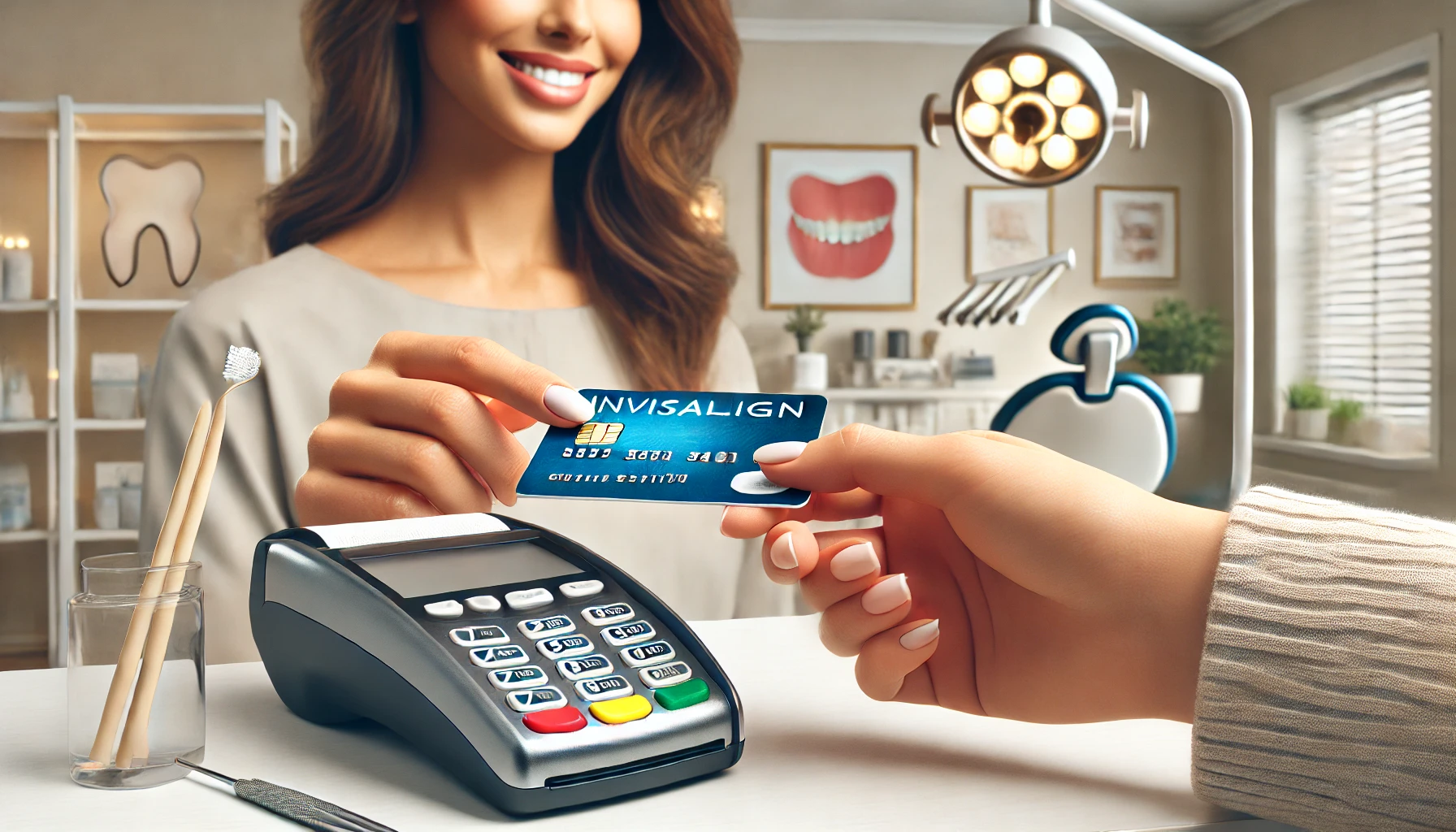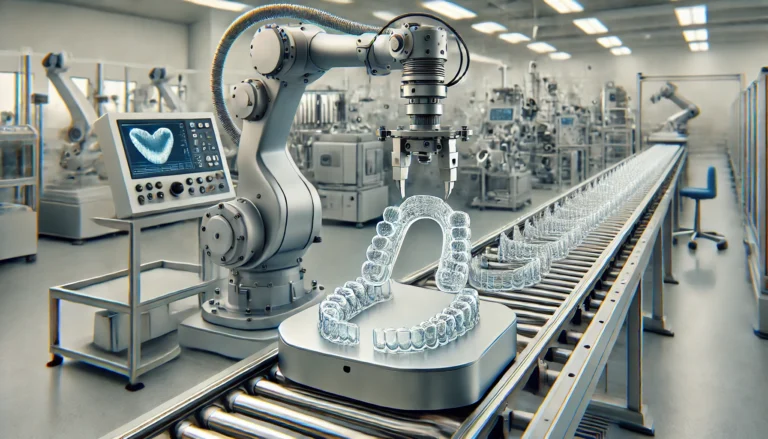
If you are looking for a straighter smile without the inconvenience of traditional metal braces, Invisalign may be an ideal solution for you. This innovative orthodontic treatment utilises clear aligners to gradually shift your teeth, providing a discreet and comfortable alternative. But how much does Invisalign cost in the UK in 2025? Understanding the financial commitment is a crucial part of deciding whether this treatment is right for you.
In this discussion, we will delve into how Invisalign works, what you can expect during your treatment, and the various benefits it offers. Furthermore, we will address common concerns, such as discomfort and potential side effects, to assist you in making an informed decision about your dental journey.
What is Invisalign?

Invisalign is a groundbreaking orthodontic treatment that aims to straighten teeth using customised clear aligners. This method provides a more aesthetically pleasing and comfortable alternative to traditional metal braces.
Not only does this innovative approach improve the appearance of smiles, but it also addresses a range of dental health concerns without the conspicuous look of metal braces.
As we approach 2025, it is clear that the demand for Invisalign is on the rise across various age groups, including adults seeking effective orthodontic solutions and teenagers looking for less intrusive dental options.
How Does Invisalign Work?
Invisalign functions by employing a series of custom clear aligners, crafted using advanced 3D imaging technology to gently move teeth into their ideal positions.
Patients typically wear each set of aligners for about two weeks before transitioning to the next set. This method offers a comfortable and discreet way to achieve the desired smile, which is why numerous individuals prefer Invisalign over traditional braces.
What Are the Benefits of Invisalign?
The benefits of Invisalign are quite significant, contributing to its popularity among individuals seeking effective orthodontic treatment.
Its nearly invisible appearance allows patients to straighten their teeth without the self-consciousness often associated with traditional metal braces.
Furthermore, the clear aligners are removable, making cleaning easier and eliminating food restrictions, which greatly enhances the overall treatment experience.
1. Nearly Invisible Appearance
One of the most notable features of Invisalign is its nearly invisible appearance, which allows patients to undergo orthodontic treatment discreetly while continuing with their daily activities.
This innovative approach to orthodontics ensures that individuals can maintain their natural smile without drawing attention to the fact that they are straightening their teeth.
With clear aligners, the focus shifts from traditional metal braces to the beauty of a confident, radiant smile. This aspect is particularly important, as it alleviates any concerns about aesthetics, making it easier for patients to engage socially and professionally during their treatment.
As patients align their teeth, the transformative power of smile aesthetics becomes increasingly evident, reinforcing self-esteem and encouraging a more outgoing demeanour.
2. Removable for Easy Cleaning
Invisalign aligners are designed to be removable, offering patients the opportunity to maintain excellent dental hygiene throughout their treatment. This feature allows for easy brushing and flossing, which is essential for oral health.
This flexibility presents a significant advantage over traditional braces, which often trap food particles and make thorough cleaning more difficult. With removable aligners, individuals can enjoy their favourite foods without the concern of damaging brackets or wires, making mealtime a more pleasurable experience.
Additionally, proper dental care becomes straightforward, as there are no obstructions to hinder effective cleaning. The ability to remove the aligners also facilitates regular dental check-ups, allowing for consistent monitoring and care from dental professionals, ultimately promoting overall oral health.
3. No Food Restrictions
In contrast to traditional dental braces, Invisalign offers patients the freedom to enjoy their favourite foods without the concern of damaging wires or brackets, as there are no food restrictions during treatment.
This remarkable flexibility significantly enhances overall patient satisfaction, allowing individuals to maintain their usual dining experiences without the inconvenience of avoiding specific items.
For those undergoing treatment, the ability to indulge in a wide variety of foods—from crunchy apples to sticky caramel—makes the journey towards a straighter smile feel much less daunting and restrictive.
Since the aligners are removable, they can be easily taken out during meals, ensuring a smooth integration into daily life. This convenience greatly contributes to the success of their orthodontic treatment.
4. More Comfortable Than Traditional Braces
Many patients discover that Invisalign is considerably more comfortable than traditional braces. The aligners are crafted from smooth plastic, which means they lack the sharp edges that can irritate the gums.
This thoughtful design feature greatly enhances overall comfort during treatment, allowing individuals to continue with their daily lives without the ongoing concern of discomfort often associated with metal wires and brackets.
Additionally, the removable nature of these aligners makes cleaning a doddle and provides the freedom to enjoy a wide variety of foods without any restrictions.
The minimal pressure applied by the aligners at each stage of treatment also contributes to a gentler orthodontic experience, making the process feel less invasive. As a result, many people prefer Invisalign, appreciating that it offers a more pleasant journey towards achieving a straighter smile.
What Factors Affect the Cost of Invisalign?

The cost of Invisalign can vary considerably due to several factors. These may include the complexity of the individual case, the geographical location of the orthodontist, and the specific treatment plan tailored for each patient.
It is important for prospective patients to understand these factors as they explore the price range and determine the affordability of this popular orthodontic treatment.
1. Complexity of Case
The complexity of an orthodontic case is a key factor in determining the overall cost of Invisalign. More challenging cases may require additional aligners and extended treatment durations.
Factors such as dental crowding, spacing issues, and bite misalignments can greatly influence the intricacies of the treatment plan. For example, severe crowding often necessitates a larger number of aligners to achieve the desired results, which in turn increases both the time commitment and the financial investment required. Likewise, cases that involve spacing issues may need specific adjustments to the aligners to create a more balanced smile.
Therefore, it is essential for individuals considering their orthodontic options to recognise that the uniqueness of their dental situation not only affects the complexity of the treatment but also impacts the overall expenses associated with the process.
2. Location of Orthodontist
The geographical location of an orthodontist plays a significant role in determining the cost of Invisalign. Typically, urban areas tend to have higher prices compared to rural locations, primarily due to the demand and competition among local dental practices.
This difference in pricing can often be traced back to the higher operational costs associated with running a practice in a busy city, where rent and overhead expenses are generally much more substantial.
Conversely, orthodontic services in less populated areas often present more competitive pricing, thanks to lower living expenses and fewer providers in the vicinity.
As a result, individuals seeking orthodontic treatment may notice considerable variations in costs, not just between urban and rural settings but also across different counties or regions. These differences are influenced by local market dynamics and the overall economic landscape.
3. Additional Treatments Needed
In certain situations, additional treatments may be necessary in conjunction with Invisalign, such as tooth whitening or retainers. These supplementary treatments can influence the overall cost and potentially lead to hidden fees.
While these enhancements can improve the final results, it is crucial for patients to understand how they may affect the total treatment expenses. For example, many patients may not be aware that follow-up visits for adjustments or comprehensive assessments might incur separate charges, thereby increasing the overall financial commitment.
Some dental practices may offer bundled services in packages, which can result in cost savings or, conversely, unexpected expenses. By being mindful of these potential fees and discussing them openly with their orthodontist, individuals can make well-informed decisions about their treatment plans and manage their budgets effectively.
How Much Does Invisalign Cost in the UK?
In the UK, the average cost of Invisalign can differ significantly based on a few key factors, such as the practitioner’s level of experience and the complexity of the individual case.
In 2025, you can generally expect complete treatment prices to range between £3,000 and £5,000.
1. Invisalign Lite
Invisalign Lite is specifically designed for minor teeth corrections and is generally more affordable than full Invisalign treatment, with an average cost of around £2,500 in the UK.
This treatment option is particularly suitable for individuals experiencing mild spacing or crowding issues who are looking for a more discreet alternative to traditional braces. Ideal candidates are those who wish to enhance their smile without committing to lengthy dental procedures, making it a popular choice for both adults and teenagers.
Patients can anticipate an average treatment duration of 6 to 12 months, which allows for quicker results and the satisfaction of achieving a straighter smile in a shorter timeframe. The use of removable aligners adds to the comfort of the experience, enabling wearers to maintain their usual eating habits while undergoing treatment.
2. Invisalign Full
Invisalign Full provides a thorough solution for individuals facing moderate to severe orthodontic issues, with costs typically ranging from £3,500 to £5,000, depending on the complexity of each case.
This advanced aligner system is specifically designed to tackle a wide range of dental misalignments, making it an excellent option for patients who require more extensive treatment.
Whether the concern is crowded teeth, gaps, or uneven bites, Invisalign Full employs a series of custom-made clear aligners to gradually shift teeth into their desired positions. On average, the treatment duration varies, usually spanning between 12 to 18 months, which can be particularly appealing for those in search of effective and aesthetically pleasing solutions.
Investing in this comprehensive treatment not only enhances oral health but can also boost self-confidence, all while remaining within a reasonable cost framework.
3. Invisalign Teen
Invisalign Teen is specifically designed for adolescents and typically ranges from £3,000 to £4,500 in the UK. This treatment addresses the distinct needs of younger patients undergoing orthodontic care.
The programme takes into consideration the various lifestyle factors and physical growth patterns that teenagers experience, making it a more adaptable option compared to standard adult Invisalign.
For example, the aligners include features like wear indicators, which help track compliance. This ensures that adolescents can seamlessly integrate their orthodontic care into their busy schedules, filled with school and extracurricular activities.
Additionally, unlike the adult versions, Invisalign Teen accommodates the potential eruption of new teeth, which is particularly important during these formative years. This combination of specialised features not only fosters effective alignment but also justifies the investment for parents seeking high-quality orthodontic solutions for their teenagers.
Are There Any Additional Costs Associated with Invisalign Treatment?

When contemplating Invisalign treatment, it is important to be mindful of potential additional costs that may arise. These can include consultation fees, retainer fees following the completion of treatment, and charges for any emergency appointments that might be necessary.
Being informed about these expenses can help ensure a smoother treatment process and better financial planning.
1. Initial Consultation Fee
The initial consultation fee for Invisalign can vary from one dental practice to another, but it generally represents a crucial investment in assessing a patient’s needs and determining the most suitable treatment plan.
During this appointment, individuals will have the opportunity to discuss their dental concerns, undergo a comprehensive examination, and explore the potential benefits of the treatment. This consultation serves as the foundation for creating a personalised approach that aligns with their specific dental health goals.
The fee paid during this initial visit often contributes to the overall treatment costs, highlighting its significance in establishing a thorough understanding of the necessary procedures. By taking this important step, patients can gain valuable insights into their options and what to expect as they embark on their journey towards a straighter smile.
2. Retainer Fee
After completing Invisalign treatment, patients may be required to pay a retainer fee to ensure that their teeth stay in their new positions during the aftercare phase. This step is crucial, as it helps prevent any shifting that might occur after the alignment process.
Retainers are significant in preserving the results achieved through treatment, providing both stability and confidence in one’s smile.
The costs associated with retainers can vary based on the type selected—whether it’s a fixed, removable, or clear retainer. Understanding these aftercare costs is essential for patients, as they represent an investment in the longevity of their treatment results.
With proper maintenance and follow-up, these ongoing expenses can lead to substantial savings in both oral health and potential future orthodontic corrections.
3. Emergency Appointments
Although Invisalign treatment generally proceeds without issues, some patients may find themselves needing emergency appointments due to unforeseen complications, which can lead to additional costs that should be factored into their overall budget.
These unexpected situations can arise from various problems, such as issues with the fit of the aligners, discomfort, or even accidents that could damage the aligners. When confronted with such challenges, it is important to seek timely assistance to avoid delays in the treatment process.
The need for emergency consultations can result in extra expenses, not only for the appointments but also for any necessary adjustments or additional aligners.
Patients should consider these potential costs when planning their finances, ensuring they are prepared to handle any unexpected complexities that may arise on their journey to achieving a better smile.
Is Invisalign Covered by Insurance or NHS?
Many patients often have questions about whether Invisalign is covered by dental insurance or the NHS. Understanding this coverage can greatly influence the overall affordability of the treatment.
How to Save Money on Invisalign Treatment?

For many patients, saving money on Invisalign treatment is a top priority. There are several strategies they can consider to help reduce overall costs while still achieving the smile they desire.
1. Compare Prices from Different Orthodontists
One effective method to reduce expenses on Invisalign treatment is to compare prices among various orthodontists, as costs can differ significantly depending on location and the practitioner’s experience.
Taking the time to research and evaluate the fees associated with different providers enables potential patients to gain a clearer understanding of the financial landscape of their orthodontic care. This strategic approach not only assists in identifying competitive pricing but also allows individuals to consider the benefits and services offered by each practitioner.
Conducting a price comparison may uncover special promotions or payment plans, further enhancing overall cost efficiency. Ultimately, making informed decisions when selecting an orthodontist can lead to significant savings while ensuring high-quality care and favourable treatment outcomes.
2. Consider Financing Options
Exploring financing options can grant patients greater flexibility when it comes to managing the cost of Invisalign, allowing them to break down payments into more manageable monthly instalments.
Many dental practices offer customised payment plans designed to fit individual budgets, enabling patients to achieve their desired smile without experiencing financial strain. These agreements frequently come with low-interest rates or even interest-free periods, making it easier for patients to spread out their payments over time.
Additionally, some providers collaborate with financing companies that specialise in healthcare, allowing patients to choose terms that best suit their needs and fostering a sense of control over their dental care expenses.
This approach ensures that patients can pursue their orthodontic treatment without feeling overwhelmed, as they can explore various options to incorporate seamless monthly payments into their overall financial strategy.
3. Check for Special Offers or Discounts
Many dental clinics provide special promotions or discounts for new patients interested in Invisalign treatment, so it is certainly worth inquiring about any available offers.
By staying informed about these opportunities, potential patients can significantly lower their overall treatment costs, gaining access to high-quality orthodontic care that fits their budget.
These promotions often include limited-time discounts, referral bonuses, or package deals that can make a noticeable difference in the final expense. In today’s competitive healthcare market, individuals should feel encouraged to ask about current promotions during their consultations.
Being proactive in seeking these advantages can facilitate a more affordable journey towards achieving a confident smile and ultimately improve one’s overall dental experience.
4. Use Dental Insurance or FSA/HSA Funds
Utilising dental insurance or funds from a Flexible Spending Account (FSA) or Health Savings Account (HSA) can greatly reduce the costs associated with Invisalign treatment.
By thoroughly reviewing their dental policy and understanding the coverage options available, patients can identify which services may be partially or fully reimbursed. Many dental plans include specific allowances for orthodontic treatments, so it is crucial to verify eligibility before starting the procedure.
For those with an FSA or HSA, using these pre-tax funds can lead to significant savings on out-of-pocket expenses while also facilitating better budgeting for oral health needs.
Additionally, patients should consider scheduling their treatments strategically within their benefit year to maximise coverage and minimise costs.
Frequently Asked Questions
What is Invisalign and how much does it cost in the UK in 2025?
Invisalign is a type of orthodontic treatment that uses clear, removable aligners to straighten teeth. In 2025, the cost of Invisalign in the UK is estimated to range from £2,500 to £5,500, depending on individual factors such as the complexity of the case and the length of treatment.
What are the benefits of Invisalign compared to traditional braces?
Invisalign aligners are virtually invisible, making them a popular choice for adults and teenagers who want a discreet orthodontic treatment. They are also removable, allowing for easier cleaning and maintaining proper oral hygiene during treatment. In terms of cost, Invisalign may be more expensive upfront, but it typically requires fewer and shorter appointments, ultimately saving time and money in the long run.
Are there any additional costs to consider when getting Invisalign in the UK in 2025?
Along with the cost of the Invisalign treatment itself, there may be additional costs such as consultation fees, X-rays, and retainers once the treatment is complete. It is important to discuss these potential costs with your orthodontist before starting treatment.
Can I use my dental insurance to cover the cost of Invisalign in the UK in 2025?
This will depend on your specific dental insurance plan. Some plans may cover a portion of the cost of Invisalign, while others may not cover it at all. It is best to check with your insurance provider to see if Invisalign is covered under your plan.
Are there any financing options available for Invisalign in the UK in 2025?
Many orthodontic offices offer financing options for Invisalign treatment, allowing patients to pay for their treatment in installments. This can make the cost of Invisalign more manageable and affordable for those who may not be able to pay for the treatment in full upfront.
Are there any potential risks or complications associated with Invisalign treatment?
As with any orthodontic treatment, there are potential risks and complications, such as discomfort, speech difficulties, and mild changes in bite alignment. However, these risks can be minimised by choosing a reputable and experienced orthodontist for your Invisalign treatment. It is important to discuss any concerns with your orthodontist before starting treatment.





